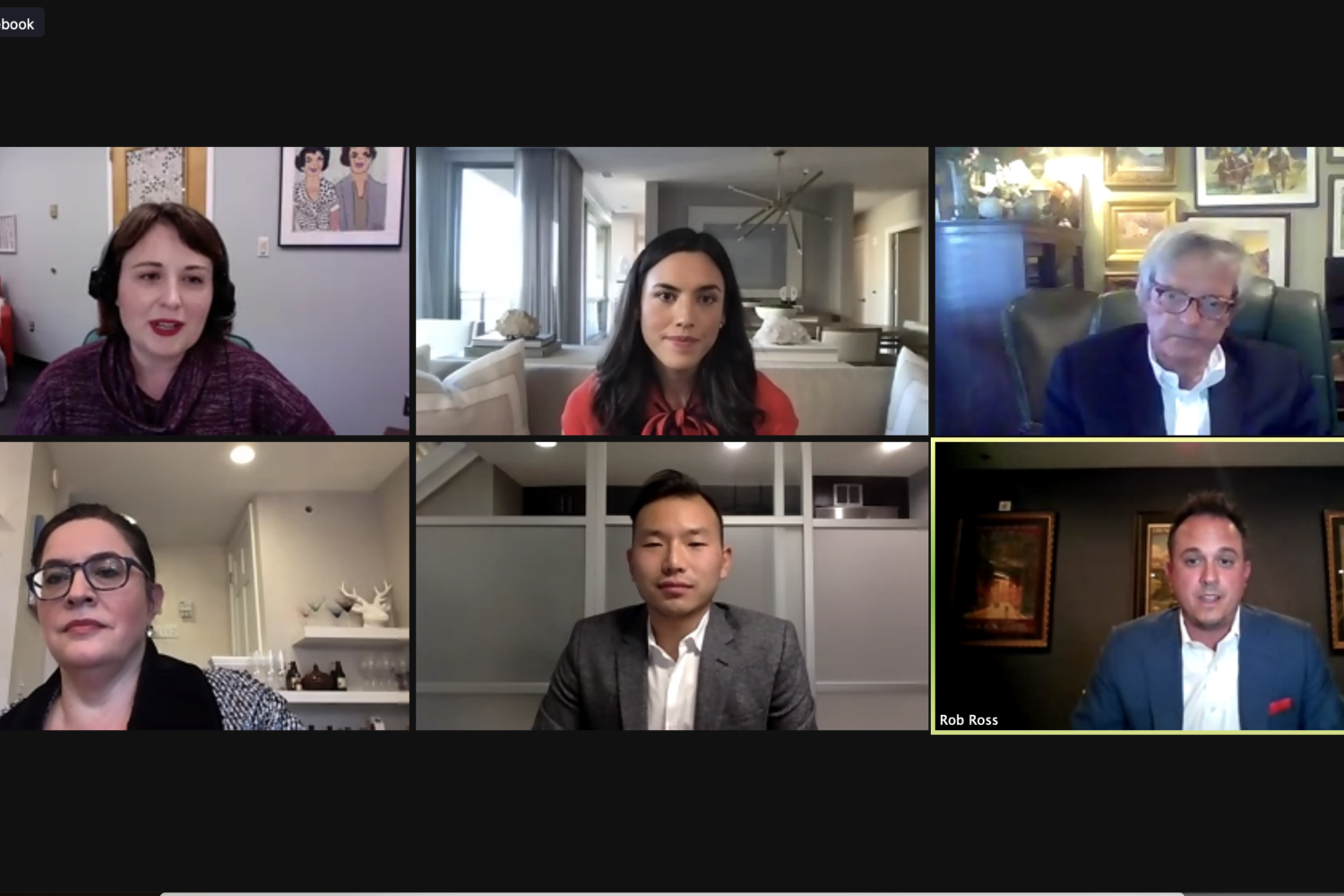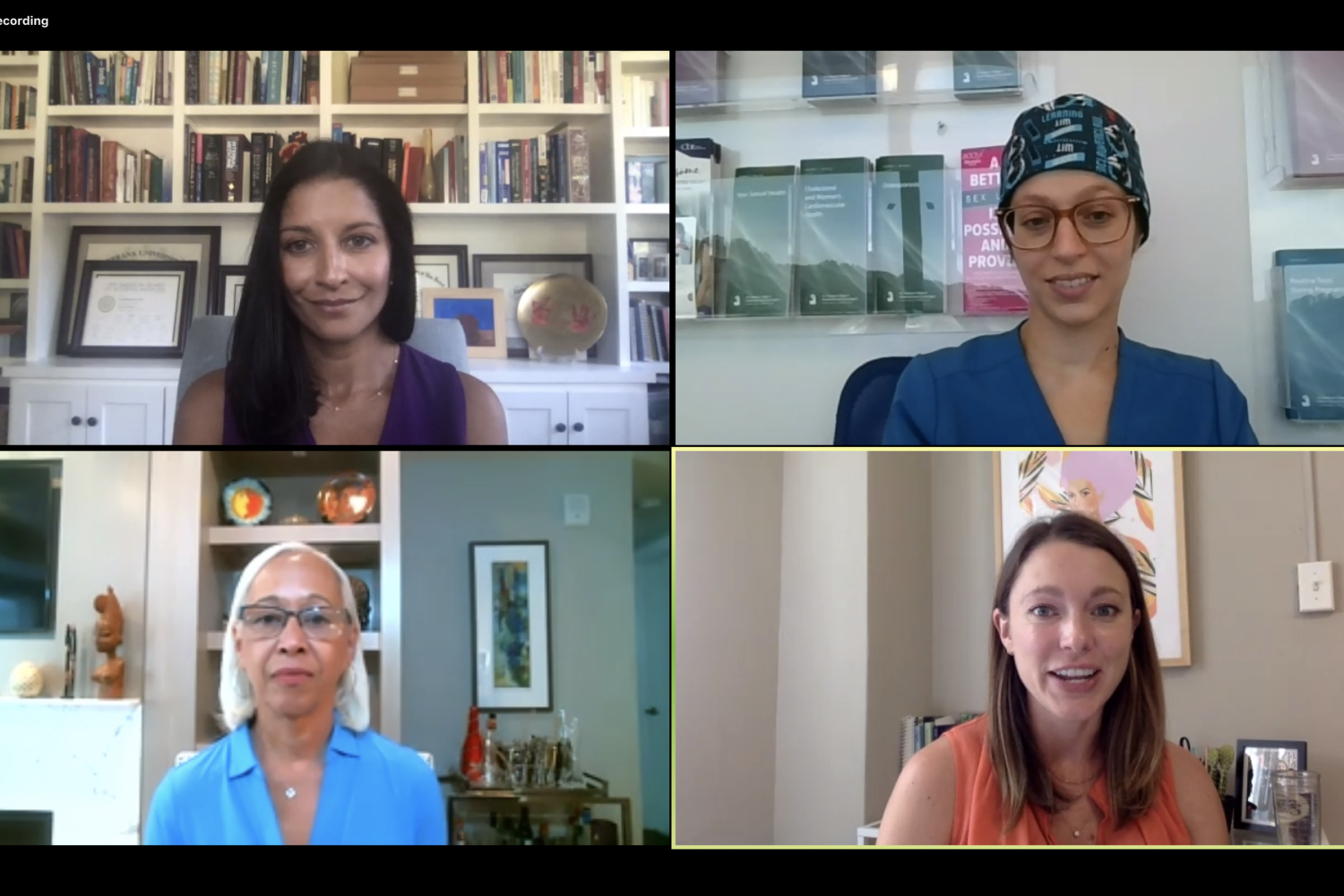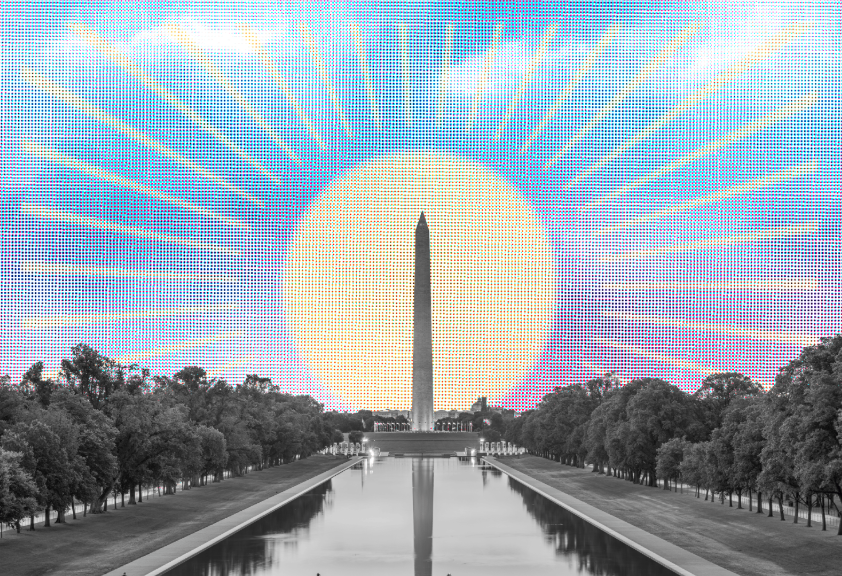
“Our planet is amazingly interconnected,” Antonio Busalacchi says. “Hurricanes formed in the tropics are influenced by phenomena halfway around the world.”
Busalacchi tries to understand and predict weather patterns as director of the Earth System Science Interdisciplinary Center and professor of atmospheric and oceanic science at the University of Maryland.
“It may not seem like it, but we’ve made great strides over the past 30 years. Satellites and extraordinary computing power have vastly increased our knowledge of the environment. We now have accurate forecasts for several days ahead. That’s not the case a week or so out. This is where our problems arise.”
Busalacchi was born in 1956 in Milwaukee. His father, a son of Sicilian immigrants, served in World War II and then opened an Italian restaurant and nightclub; his mother helped at the restaurant and later was a secretary.
While Busalacchi was in high school, the family moved to Florida. He attended Florida State University, graduating in three years with a degree in physics. He continued his studies at Florida State, earning a PhD in oceanography.
Upon leaving Tallahassee in 1982, Busalacchi went to work at NASA’s Goddard Space Flight Center as an oceanographer. At 34, he became one of the youngest members of the federal government’s Senior Executive Service. He later headed Goddard’s laboratory on hydrospheric science.
In 2000, he left Goddard and founded the Earth System Science Interdisciplinary Center to integrate the research underway in the University of Maryland’s meteorology, geology, and geography departments and to coordinate that work with Goddard’s earth-sciences program.
Busalacchi lives in Burtonsville with his wife, Maria, who is Brazilian and works for the Brazilian navy section of the embassy. He has one son from a previous marriage, Antonio III, a freshman at the University of Maryland.
In Busalacchi’s office, with calculations grinding out on his computer screen, we talked about what he’s learned.
Why is it so hard to predict the weather?
Because the weather is a chaotic system. Most of its elements aren’t predictable. Weather is highly sensitive to many conditions, which we measure by gauging the atmosphere with satellite temperature sensors and ground precipitation sensors. We put all the results through huge numerical models in a computer, which spurts out a forecast. A change in any of these conditions can cause the forecast to veer off.
We do increasingly better with climate forecasts, which refer to temperature and precipitation patterns weeks or months out. Climate changes depend on conditions in the atmosphere as modulated by the oceans, which change on a slow time scale.
So while we can’t predict weather well beyond a week, we can predict aspects of climate out to a year. Climate is essentially the average of weather over several weeks. There we ask, “What are the prospects of having above-normal precipitation or above-normal temperature?” Again, not in any single day but in a seasonal average.
Do you do much better than the Farmer’s Almanac did a century ago?
Yes. Those almanacs worked on the law of averages, presuming that what happened over the previous three years was what they expected to happen that year.
Animals and plants do pretty well at predicting, don’t they?
We’ve learned a lot about how temperature, ocean precipitation, atmosphere, and land all interact. Now we’re beginning to analyze what living organisms can tell us. How do physics and temperature affect the living world? How does biology in turn affect the climate?
Take the skipjack tuna, which is prized for sushi. It’s a highly migratory species, which swims east and west thousands of kilometers in the Pacific Ocean. Its migration tells us of changes in El Niño, the largest natural climate phenomenon on earth.
Let me explain El Niño. The western tropical Pacific Ocean has the largest body of warm water anywhere—around 86 degrees Fahrenheit. And the Pacific spans a third of the globe’s circumference.
El Niño happens when that western Pacific warm water moves all the way into the eastern Pacific. That movement changes the location of the atmosphere’s heat engine, as it releases large amounts of water vapor, changing precipitation and temperature patterns worldwide. The ocean’s energy is thereby transferred to the atmosphere on a global scale. There lie the heat source and major perturbation for global weather patterns.
So El Niño is the result of the ocean and atmosphere being coupled together, each forcing the other.
What weather is easiest to predict?
We’re best at large-scale disturbances, like hurricanes and the steady progression of weather fronts from west to east. Remember that the National Weather Service’s 2005 hurricane forecast was spot on, with Katrina a near-perfect forecast.
Over the past seven years, we in the scientific community have greatly narrowed our uncertainty on where a hurricane will land and when. We’re making such forecasts further out into the future. We’ve advanced our field over the past two decades by adopting a global perspective.
What do you need to improve your weather predictions?
Even more powerful computers.
I thought computing power was nearly infinite nowadays.
Not for the environmental sciences.
The Japanese government has the Earth Simulator, which simulates phenomena on earth with high resolution, on the scale of kilometers. That’s ten to 100 times the resolution of our weather models.
Another huge help would be more satellite observations. For example, while we now have a research satellite in orbit to measure tropical rainfall, NASA doesn’t plan for another precipitation-monitoring mission until 2012 or 2014.
Higher-resolution observations can shape better models and provide us with data for improved forecasts, including for current conditions—what we refer to as “nowcasts.” Better monitoring of Falls Church can tell us what’ll happen in downtown DC in ten minutes.
Can’t you get that from a Google map?
No, that’s static information. We need real-time, high-resolution monitoring of earth systems.
Someday we’ll click on “Google environment” and see everything around the world as it’s happening—forest fires, volcanoes, drizzles, tornadoes, changes in vegetation. We’ll be monitoring information on the whole earth, which we can then use to make predictions for everywhere on the planet.
What will that do for us?
A lot. Iowa corn farmers will gain lead time for anticipating the amount of water they’ll need, the type of crops they should plant, what pests are coming. So there will be a clear economic advantage, especially in agriculture, transportation, and recreation.
Plus the medical advantages—20 years from now, we’ll be able to predict outbreaks of malaria, dengue fever, encephalitis. We’ll better predict forest fires, heat waves, and other conditions. And not just for the United States; developing nations will benefit most from this new predictive capability.
Developing countries at low latitudes have gotten used to the rhythms of seasons and monsoons. A perturbation from that normal pattern can have disastrous implications. A lead-time warning could immeasurably help them cope.
They’ll also benefit from precipitation forecasts. Many diseases are dependent on precipitation—especially insect-borne diseases. Predicting precipitation months ahead allows for mitigation and eradication. Local authorities and nonprofits can ensure that there’s less standing water around to reduce breeding grounds for these insects.
El Niño often brings torrential downpours, which can devastate coastal lowlands, as in Ecuador and Peru. Lead-time forecasts allow civil-defense workers to clear drainage canals and fortify bridges.
Cholera is carried by a small plankton called zooplankton. Under certain combinations of changes in temperature, salinity, and nutrients, these zooplankton bloom in coastal sea water and enter the water supply. As a result, we have cholera outbreaks.
We can model those conditions and thus warn the local populace not to drink the water just then or to filter fresh water.
The point is we’re starting to understand climatic impacts on the whole biosphere, which directly affects local populations.
How far away are we from better weather forecasts?
Weather forecasts are always improving incrementally. If we can bring the different scientific fields together and if budgets allow, over the next 20 years we can expect major improvements not just for weather but in forecasts for the earth system as a whole.
Think back 20 years ago. Nobody even knew what El Niño was. Now it’s cocktail-party conversation—at least in the circles I hang out in.
So will Washingtonians handle snowstorms any better?
I doubt it. But that gets into the social sciences, out of my line. You can have a perfect forecast, like anticipating Hurricane Katrina, but not be in a position to deal with such conditions well.
When I was growing up in Milwaukee, we had regular snowstorms. In Washington—where snowstorms are rare—they lack that experience. So this place gets crazy.
Will meteorologists get better at predicting snowstorms?
Predicting a snowstorm is no different than predicting day-to-day weather—except for the critical complication of determining the boundary between snow and rain. The overall amount of snow is determined by the track of the storm and its duration, temperature, and moisture source.
These predictions are constantly improving in their accuracy and lead time as our numerical models, satellite observations, and computational horsepower supporting the models improve.
What can Washingtonians expect in our summers and winters?
There are large uncertainties in projecting changes in the regional climate. Overall, we may expect a tendency toward warmer and wetter weather.
So should we be as concerned about global warming as Al Gore is?
Yes. What to do about it is a different matter.
Here’s what we know: The planet is warming, no doubt about it. Using global mean temperatures, we’re the warmest we’ve been in at least 1,000 years.
Second, man has become a major contributor to that warming. The planet has the highest carbon-dioxide level in more than 400,000 years.
These two matters are nearly universally acknowledged. Where the scientific debate has moved is: Exactly how much warming is due to man? How fast? And what’ll happen in the future?
There’s legitimate scientific uncertainty over these questions. Most uncertain is what our greenhouse-gas consumption will be and what’ll happen in China and India.
Is global warming necessarily bad?
There’ll be winners and losers. Canada and Russia will get warmer, moving their wheat belts north. But then the calculations get complicated, since warmer temperatures in those regions permit more pests—normally killed off by a hard freeze—to live.
Melting the permafrost in Alaska has its downside. And there are credible catastrophic scenarios caused by Greenland icecap melting.
Would that melting have any effect on this area?
The Delmarva region would be highly vulnerable to sea-level rise. Independent of ice-sheet melting, sea level is expected to increase between one and three feet over the next century, solely because of thermal expansion of seawater caused by increased warming.
If a catastrophic melting and discharge of the Greenland or Antarctic ice sheet ensued, sea level would rise by much more. We don’t know the probability of this happening, but it’s certainly possible.
Even by more conservative estimates, low-lying areas of Delmarva would be vulnerable. These include downtown Alexandria, Baltimore’s Inner Harbor, Maryland’s Dorchester County, and the Chesapeake islands, which are only three to four feet above sea level.
Higher elevations would still be vulnerable because storm surges would be riding on a much higher mean sea level.
Beyond sea-level impacts, a warming climate would cause the Chesapeake Bay to be subject to deleterious changes in runoff, storminess, invasive species, and damage to tidal wetlands.
What should we do about all this?
Proceed with a “no regrets” strategy—doing things that are beneficial by themselves but that would also help reduce global warming. Cleaner energy sources and engines are obvious examples.
Granted, that carries economic cost and raises equity issues. Developing nations are advancing in part as a result of access to cheap fuel. China, India, and Brazil rely on that and will suffer from restrictions or limitations.
What’s happening in forecasting in the Washington area?
A lot. Several divisions of the National Oceanographic and Atmospheric Administration are relocating to the University of Maryland in 2008, with 800 civil servants who specialize in weather and climate prediction.
So between NOAA, NASA Goddard, and the University of Maryland, the College Park/Greenbelt area is poised to become a world center for weather and climate prediction. This will encompass meteorology, oceanography, climatology, and satellite monitoring.
We’ll take advantage of the synergy between the government and the university, establishing the largest assemblage of earth scientists anywhere.
What have you learned about weather and climate?
There are limits to weather predictions but better upside potential for climate predictions and environmental prediction.
We can improve only by drawing in people of diverse backgrounds and strengths. My job as group leader is to bring disparate individuals together to attack complicated problems that can’t be solved by any one of them.
Your lessons of life?
My personal motto is “Work hard and play hard.” A person makes his own opportunities. Being in the right place at the right time isn’t usually due to luck; it comes after hard work to position yourself in a really critical place.
I believe in having a healthy perspective and life balance. I’m an officer in the Chaîne des Rôtisseurs, the oldest and largest food-and-wine society in the world. This means I arrange lots of winetasting, wine-judging, and gourmet events on the East Coast. Not a bad way to get out of the office.
Wine growing has a lot to do with climate, doesn’t it?
It does. Grapes in Bordeaux, Burgundy, and Italy are basically shaped by local climate. If their climate is warming, the good wine-growing zones will shift farther north.
In my wine life, I learned that the records on Pinot Noir and Burgundy wines go back to the 1300s, beginning with records by monks. These reveal that 2003 was the warmest in Europe in 600 or so years.
So my hobby ends up being part of my profession.
















